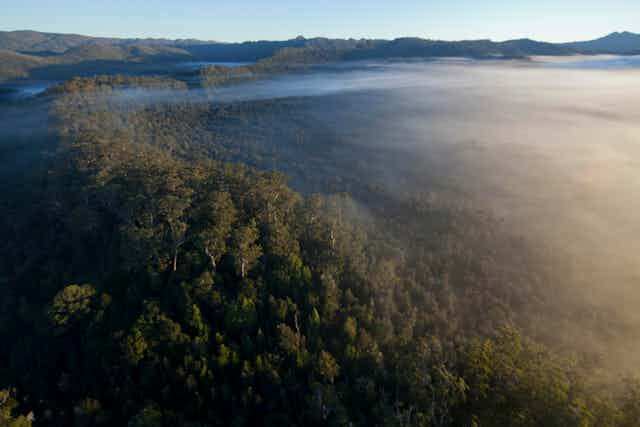In Australia, we ride on the open cut mine’s back.
In the island state of Tasmania, there is a medium size-class open cut mine (928 hectares) with 210 hectares of settling ponds, from which iron nodules are piped 85km through the middle of the largest rainforest in Australia (262,940 hectares).
This rainforest is part of the Tarkine, a name made up by conservationists for an extensive tract of wild country in the northwest of the state.
Much of the Tarkine region is highly prospective for minerals. Some of it is more than prospective, with the development of new mines currently being proposed to complement those that already exist and replace those that have closed down.
Short-term jobs and profit oppose nature conservation, promising a debate of equal virulence and divisiveness to that about logging of Tasmania’s old growth forests.
We know why developers, politicians and people in economically depressed regions love mines, but why are conservationists so passionate about the Tarkine forests that they propose to sacrifice themselves to prevent new mines?
What characteristics of the Tarkine forest make it special for them?
Conservationists correctly perceive the area of forest in Tasmania not logged or disturbed by mining and/or stock grazing is small (approximately 1 million ha) compared with the original 5,514,217 hectares of forest in the state. More than 200,000 ha of such forest occurs in the Tarkine.
The trees in most of these forests were established well before Europeans occupied Australia. Research published in Forest Ecology and Management suggests one individual tall Tasmanian eucalypt is 509 years old.
Some Huon pines on the rivers of the Tarkine are likely to be more than 2,000 years old.
The forests have a harmony, complexity, detail and lushness irresistible to the nature photographer, and emotionally overwhelming for many others. Although they lack the inspirational context of high mountains and lakes found in the nearby Tasmanian Wilderness World Heritage Area, there is nowhere else in Australia where a large view-field can be totally composed of rainforest.
A recent paper in Agricultural and Forest Meteorology suggests there are few, if any, circumstances in which logging primary wet-eucalypt forest will not add to the global carbon burden. Mining destroys the forest, rather than removing a large part of its carbon, so this argument is stronger for mining per unit area. However, the area covered by any single mining operation is small in relation to the forest as a whole.
Single mining operations need to be put in the context of potential and past mining operations, with mining leases and licenses covering approximately 80% of its wild forests.
The most important of the Tarkine forests are those on basalt. Around 70% of the forest on basalt in Tasmania has been cleared for agriculture or plantations. The forests on basalt in the Tarkine are largely tall forests with cathedral-like understories dominated by southern beech.
The Tarkine is the stronghold of these callidendrous (tall) rainforests, which closely resemble other forests dominated by Nothofagus species, which are found in New Zealand and South America. All these Nothofagus species appear to have had ancestors that lived on the Gondwana supercontinent.
Some of the best examples of the expression of different types of vegetation through feedback to fire regimes can be found in the Tarkine. The flammable buttongrass moorlands and eucalypt forests to the west of the rainforest send sparks to light up ridges within the rainforest, maintaining them as eucalypt forest.
A recent paper in the Journal of Biogeography provides strong evidence that patterns of ignition by human beings have had huge effects on the distributions of rainforest and other vegetation types.
Conservationists hope the maintenance of wild forests in protected areas, free of roads and mines, will reduce such incidences of ignition, allowing the largest rainforest in Australia to survive intact.
The values of the Tarkine forests we have described above defy ready conversion into dollars or jobs. Like our economy, they are the product of values that are not shared by all of our species.
However, it is possible for us to determine how important the Tarkine is in representing each of them, a task with which we are presently engaged.
We can then ask questions like: is the money from a mine more important than risking the loss of some of the largest patch of callidendrous rainforest on basalt in Australia?
Such questions can then ultimately only be resolved by political processes at the state, national and international levels.
The author would like to acknowledge the contribution of PhD student Jennifer Evans to this article.

